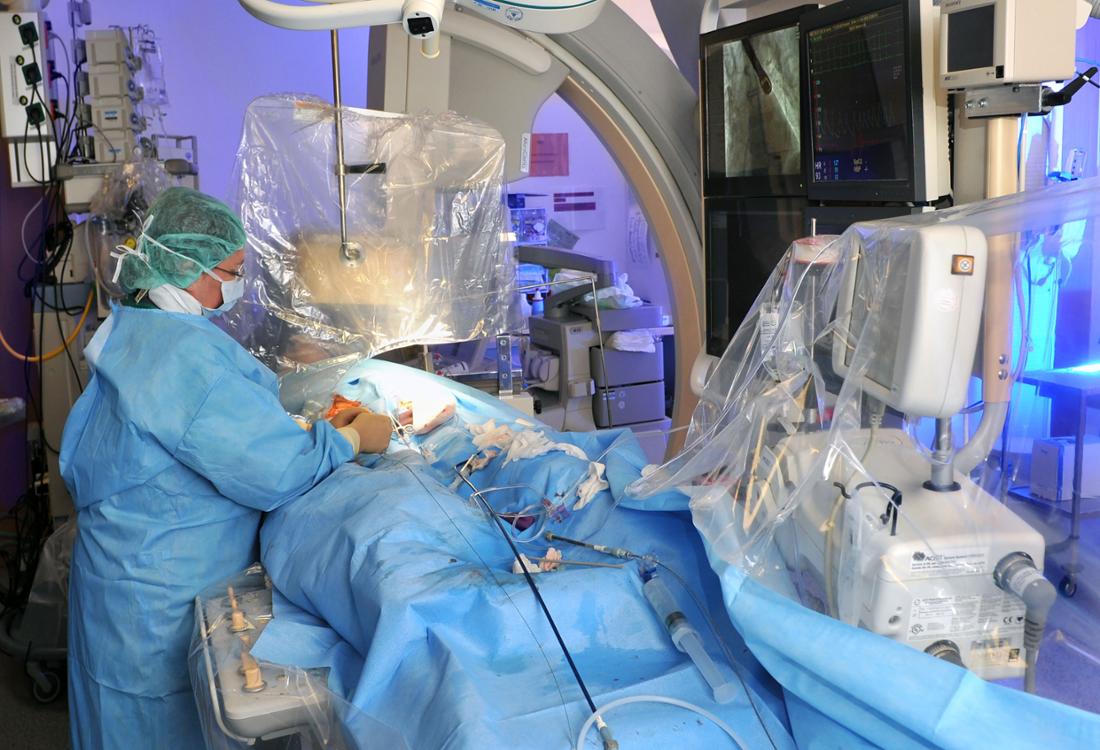Press
The head of cardiac surgery at the German Heart Center in Munich explains how faulty fires in the heart are detected. Atrial fibrillation – the most common cardiac arrhythmia – is the cause of one in three strokes.
The disturbance in the heart is increasingly giving doctors headaches: Statistically speaking, one in three people is already at risk of developing a cardiac arrhythmia in the course of their life. And experts predict that even more patients will be affected in the future.
Atrial fibrillation: 1.6 million people affected in Germany alone
Around 1.6 million people in Germany suffer from atrial fibrillation alone. This makes it the most common cardiac arrhythmia. The name is derived from the most common place where the event occurs: the left atrium, or more precisely the atrial appendage. The irregular heart rhythm causes blood to pool there and blood clots can form. These thrombi – as the technical term goes – can be washed into the brain. If the thrombi block a vessel there, a stroke occurs. “This fatal chain reaction is the cause of around one in three cerebral infarctions,” explains Prof. Markus Krane. Director of the Clinic for Cardiac and Vascular Surgery German Heart Center Munich. To prevent a stroke caused by atrial fibrillation, doctors usually prescribe their patients blood-thinning medications such as the classic drug Marcumar or modern successor preparations such as Pradaxa, Eliquis, Lixiana or Xarelto.
Cardiac arrhythmias: pulse can climb to 200

When atrial fibrillation sets in, those affected are often unsettled or downright frightened. A Munich woman has now described very impressively that she even feared a heart attack. No wonder, the heart normally beats around 60 to 90 times per minute at rest. With atrial fibrillation, on the other hand, the heartbeat becomes chaotic and very fast; the pulse can climb up to 200.
Heart specialist Professor Markus Krane advises self-checking your wrist
Against this background, heart specialist Krane advises simple self-monitoring as an early warning system: “It makes sense to feel your pulse every now and then, for example on your wrist. If your pulse often seems irregular, you should report it to your family doctor or cardiologist. You can also use a smartwatch to check.” The doctor will then usually prescribe a long-term ECG, which can be used to detect atrial fibrillation. “A normal ECG is not very informative in this regard because atrial fibrillation often occurs in episodes. Sometimes it only lasts a few minutes,” explains heart specialist Krane.
Atrial fibrillation is often caused by heart valve disease and high blood pressure
According to Krane, the most common causes of atrial fibrillation are high blood pressure and diseases of the heart valves, which over time lead to overstretching and enlargement of the atria. In addition, an overactive thyroid or sleep apnea can also trigger atrial fibrillation. The risk increases with age. Almost five percent of all people over 64 are affected.
This article only contains general information on the respective health topic and is therefore not intended for self-diagnosis, treatment or medication. It in no way replaces a visit to the doctor. Our editorial team is not allowed to answer individual questions about medical conditions.

